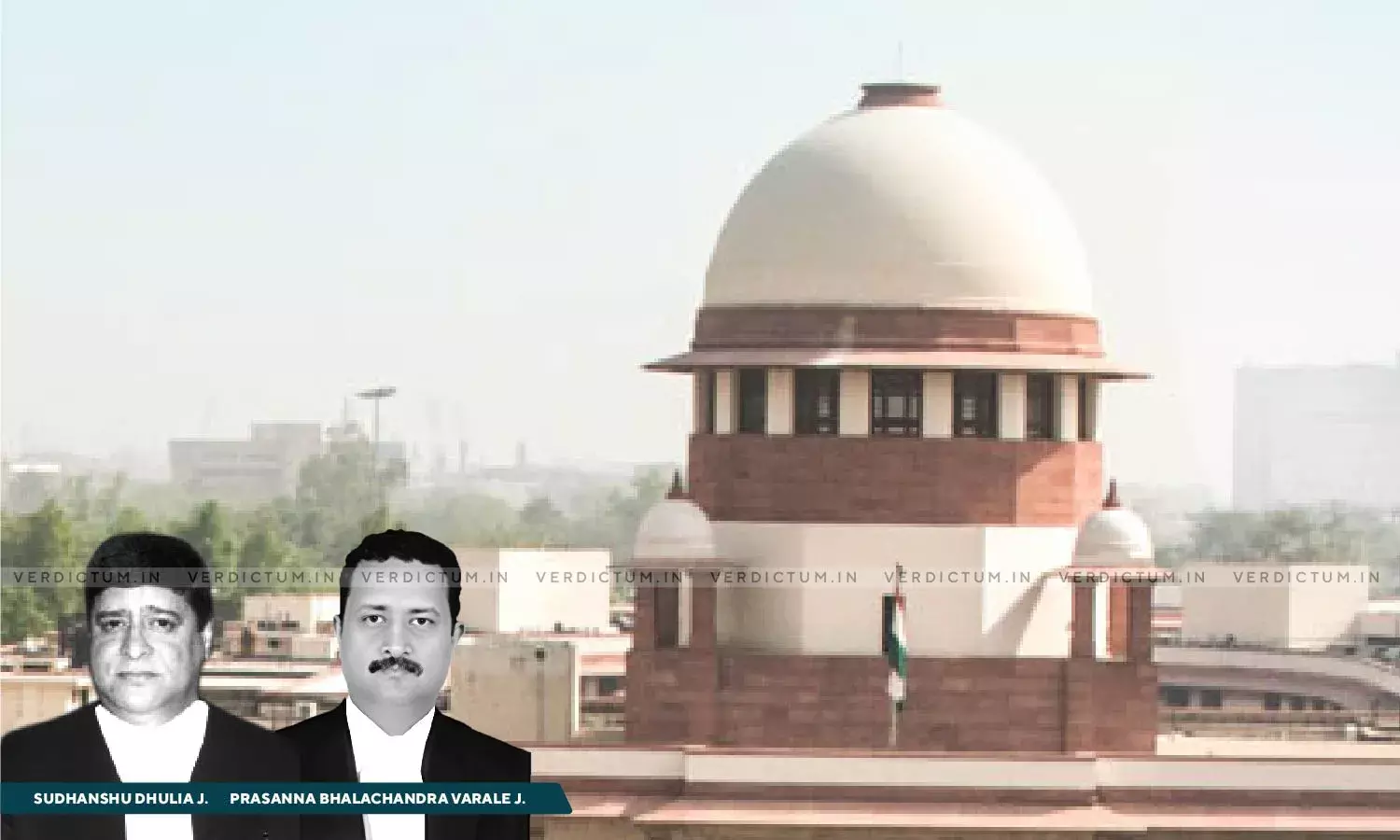Accused Can't Claim Acquittal On Ground Of Faulty Investigation: SC Upholds Conviction Of CPI(M) Workers For Murdering Two RSS Workers

The Supreme Court upheld the conviction of Communist Party of India (M) [CPI (M)] workers who were accused of murdering two Rashtriya Swayam Sevak Sangh (RSS) workers in the year 2002.
The Court was hearing a Criminal Appeal preferred against the Judgment of the Kerala High Court by which some accused persons were acquitted while others were convicted.
The two-Judge Bench of Justice Sudhanshu Dhulia and Justice Prasanna B. Varale observed, “… the principle of law is crystal clear that on the account of defective investigation the benefit will not inure to the accused persons on that ground alone. It is well within the domain of the courts to consider the rest of the evidence which the prosecution has gathered such as statement of the eyewitnesses, medical report etc. It has been a consistent stand of this court that the accused cannot claim acquittal on the ground of faulty investigation done by the prosecuting agency.”
The Bench said that, as the version of eyewitnesses in specifically naming the accused have been consistent throughout the trial, there is enough corroboration to drive home the guilt of the accused persons.
AOR C. K. Sasi and Advocate Meena K Poulose represented the Respondent/State.
In this case, in the year 2002, Rashtriya Swayam Sevak Sangh/Vishva Hindu Parishad (RSS/VHP) had called for a hartal (strike). This led to clashes between the members of the Communist Party of India (M) (CPI (M)) and RSS. A group of 11 persons, afraid of the mob allegedly led by CPI(M), hid, and stayed near a shed situated near a river. At midnight, they saw 11 persons coming from the eastern side and 5 persons coming from the northern side carrying deadly weapons like, axe, dagger, and chopper. All the 11 but for the 2 deceased persons were alerted and rushed towards the river to save themselves. The two deceased persons were asleep and thus, the mob allegedly inflicted fatal injuries on them.
Resultantly, an FIR was registered under Sections 43, 147, 148, 341, 506(ii), 307, 302 read with 149 of the Indian Penal Code (IPC) and Sections 3 and 5 of the Explosive Substances Act, 1908 (ESA). Subsequently, the accused persons were arrested and recovery of the axe used in the murder was made from the bushes near the spot of occurrence. Thereafter, other accused persons were also arrested. The Trial Court found all of the accused persons guilty but the High Court convicted A1 to A3 and A 11 & 12 while acquitted A4 to 10, A13 & A14 and confirmed the acquittal of A15. Being aggrieved, the convicted ones were before the Apex Court.
The Supreme Court in the above context of the case, noted, “When the testimony of PW1 Jitesh, PW 2 and PW4 is seen cumulatively, their versions can be seen to be corroborating each other. All of them being eyewitnesses, what is material to be seen is their stand is consistent when they said that it was A2 who was responsible for inflicting blows on both the deceased. It may not be out of place to mention that though the unfortunate incident took place at midnight around 1 am, it was a full moon night and as such, it was not pitch dark. This has also not been vehemently disputed by the defence counsel. Hence, the version put forth by the prosecution witnesses inspires confidence of this Court.”
The Court reiterated that the principle ‘falsus in uno, falsus in omnibus’ is not a rule of evidence and if the Court inspires confidence from the rest of the testimony of such a witness, it can very well rely on such a part of the testimony and base a conviction upon it.
“In this process, it is quite natural that all the members may not find a suitable place for hiding at a particular spot or one spot. This being the situation, it was also natural and possible that Sujeesh might have rushed to another spot to hide and save himself and as such his body is found away from the dead body of another victim Sunil. The violent mob of accused persons led a deadly attack on the members of the mob and was successful in killing two members of the mob”, it further said.
The Court observed that, merely because the dead body of one was found at a place little away from the place of body of other victim, it cannot be the sole and decisive factor to discard the entire case of prosecution.
“The specific role attributed by the prosecution witnesses cannot be challenged on extraneous grounds which have been raised by the defense. There is no contradiction when it comes to assigning specific role to the above accused. Admittedly, there was an enmity between the witnesses as they were from different political groups”, it added.
The Court was of the opinion that, mere act of throwing the bomb by A3 would give rise to reasonable suspicion that he did not have the bomb in his control for a lawful object and hence, the High Court rightly upheld the conviction of A3 for Section 5 of ESA.
Accordingly, the Apex Court dismissed the Appeal and upheld the conviction.
Cause Title- Edakkandi Dineshan @ P. Dineshan & Ors. v. State of Kerala (Neutral Citation: 2025 INSC 28)


